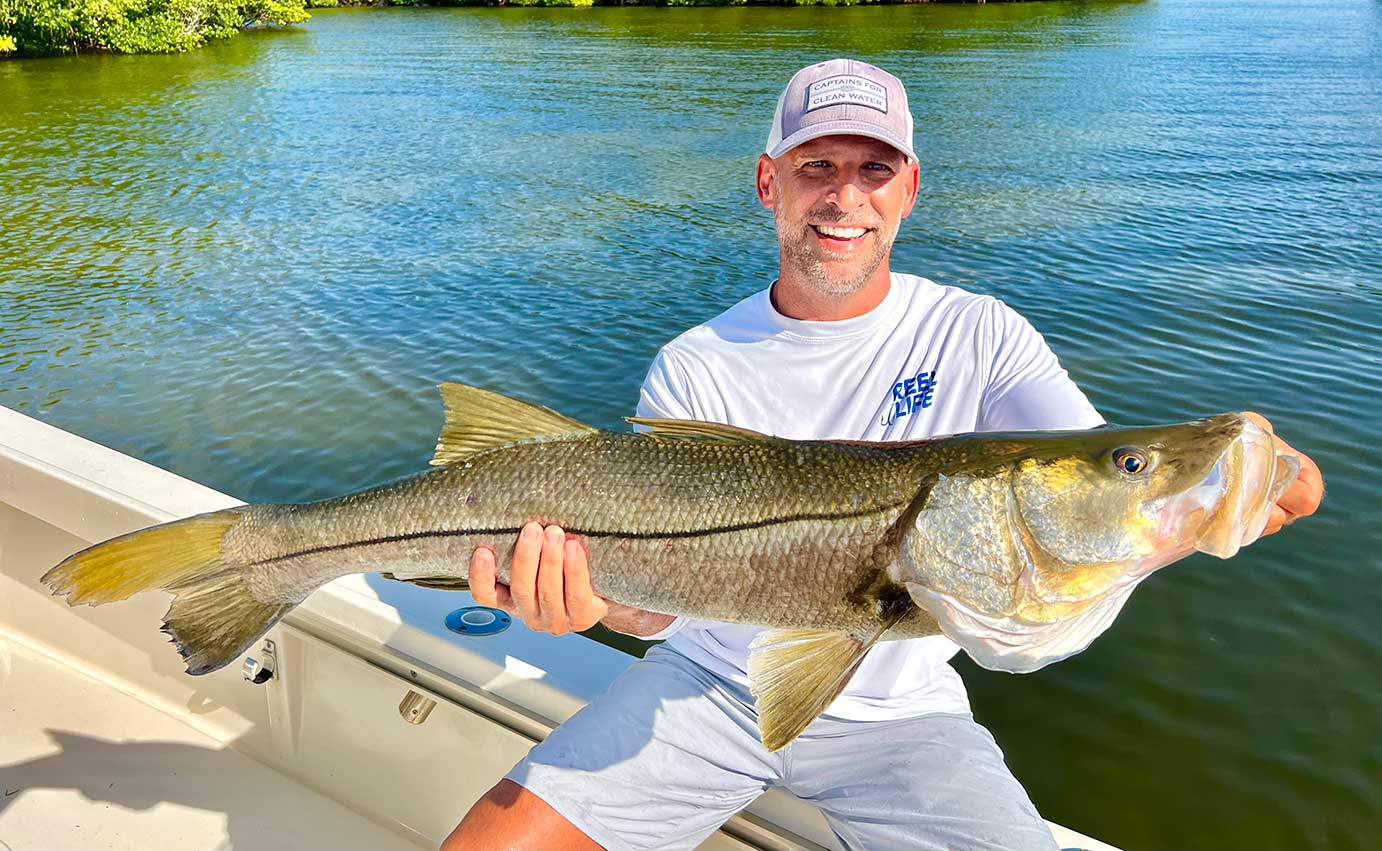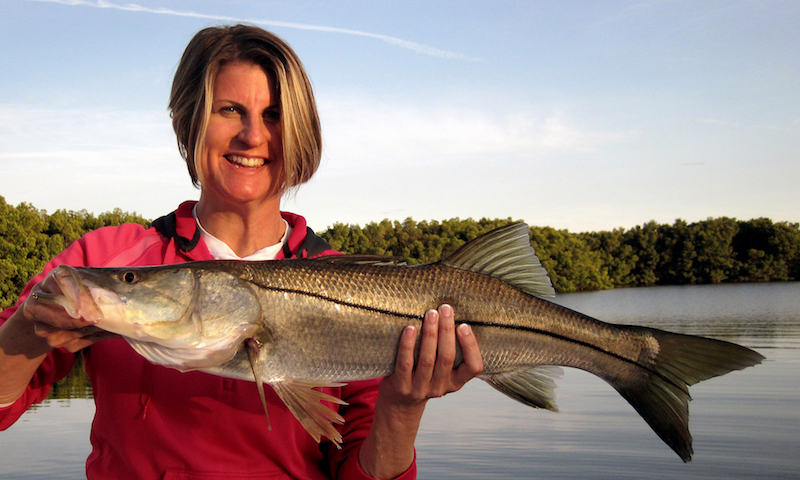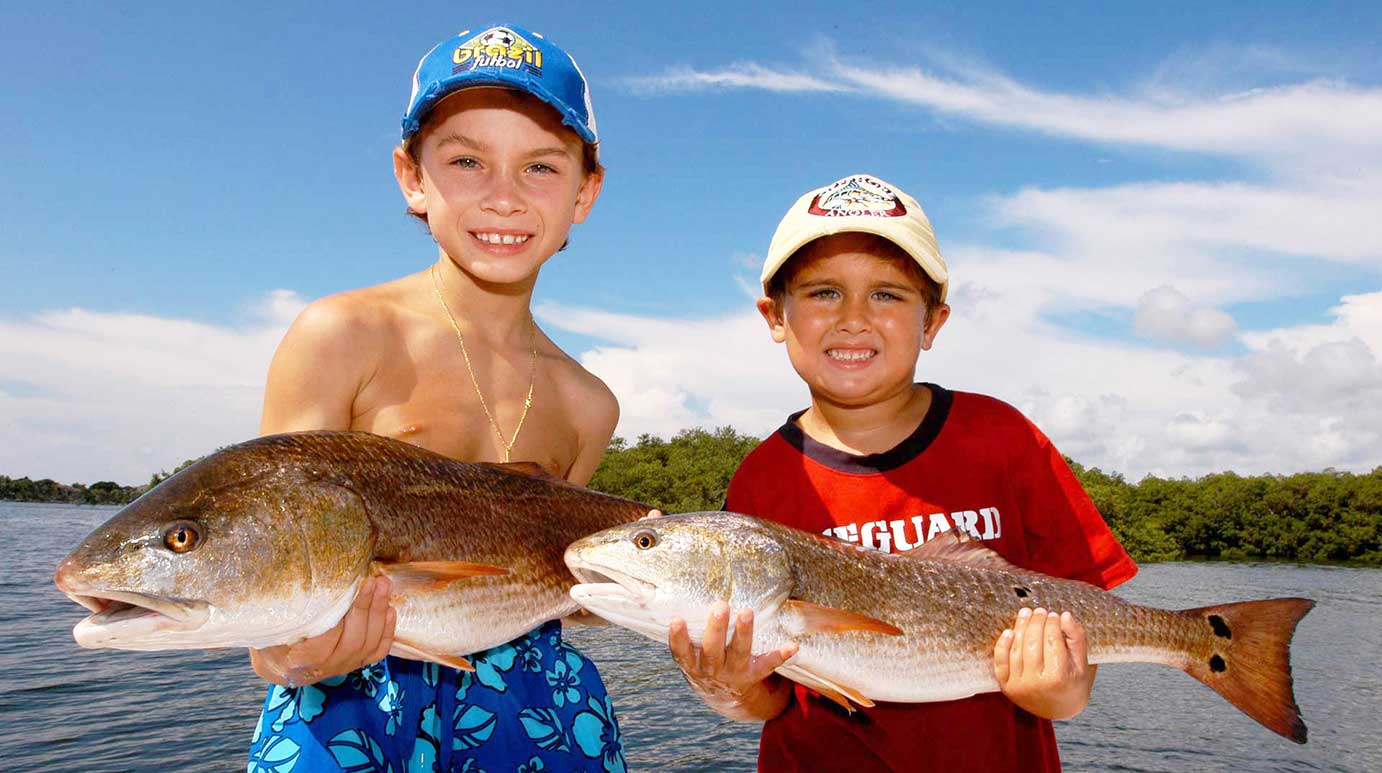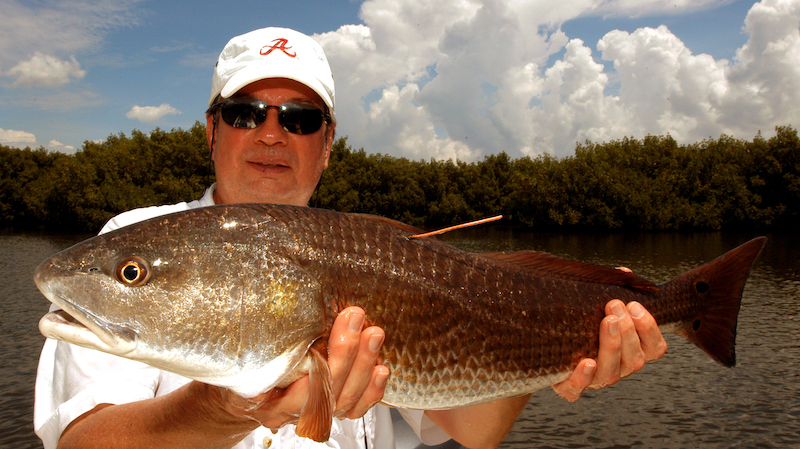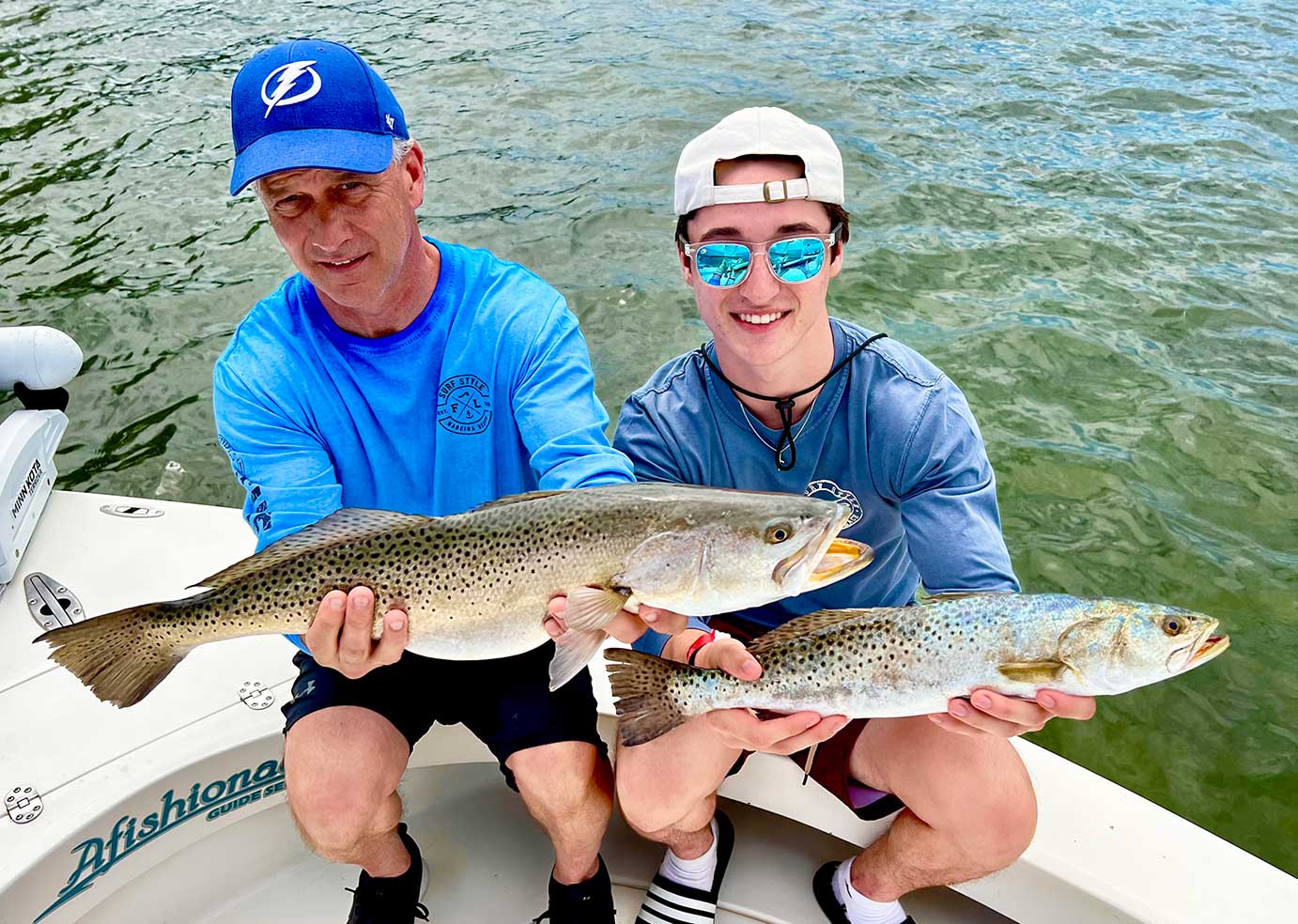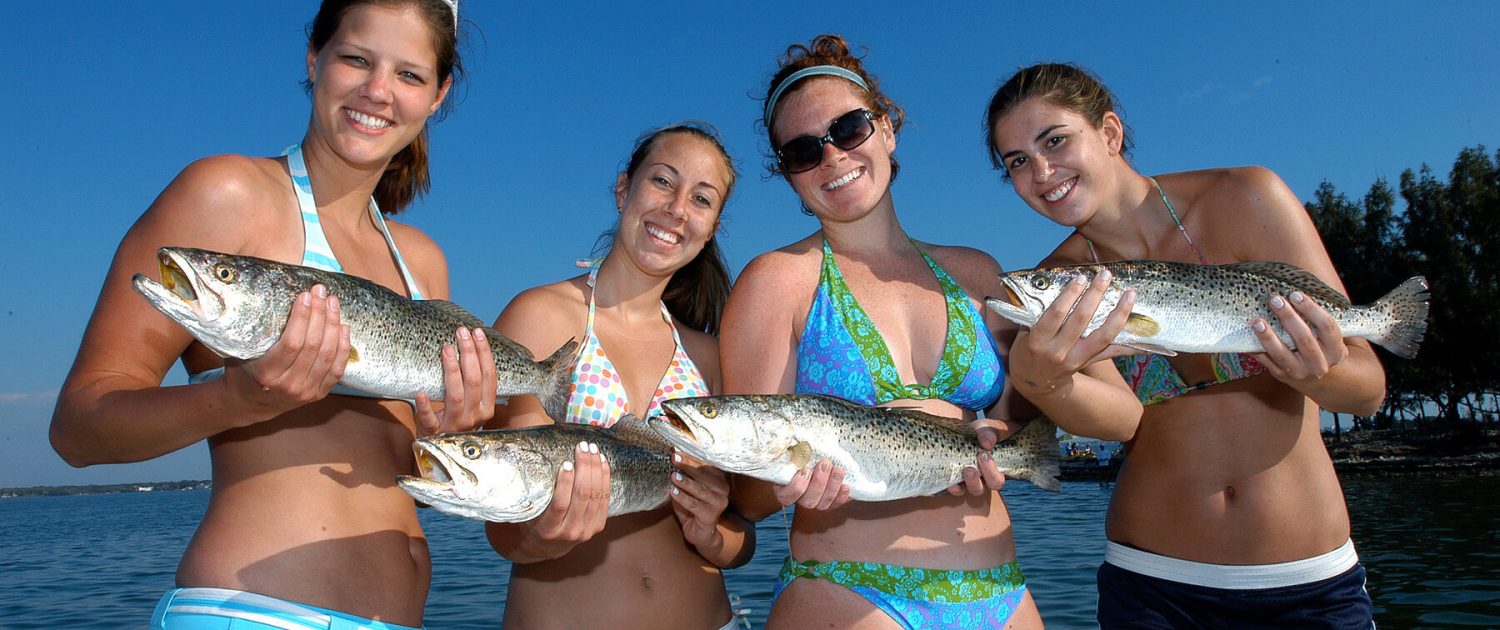Tampa & St. Petersburg
Snook
Snook fishing in Tampa/St. Petersburg with Captain Wade Osborne is a drag screaming experience. People travel from all over the world to tangle with this highly acrobatic and prized Florida species. Methods for catching snook include spin casting with live-bait, plug, jig, and fly fishing. Snook can be pursued year-round with most fish weighing between three to 10 pounds. During May, June, July and August when the largest of the “linesiders” are spawning, catching 30 plus snook during one outing is commonplace with some fish weighing possibly 10 to 25 pounds. When winter rolls around snook seek shelter from the cold and stack up in certain locations. When this occurs, it’s possible to catch over 100 snook per charter.
Osborne targets mangrove shorelines, grass flats with sandy potholes and oyster beds when pursuing snook. Nothing is more exciting than watching a snook inhale a fly, plug or jig. When using live scaled sardines, Osborne fishes the same areas, but he anchors the boat and employs a live-bait chumming technique. Baits are squeezed by hand and broadcast in an area with fish to trigger them to feed. Then hooked baits are presented in the same spots for a solid hook-up.
Landing a snook is often a battle of wits. You have to take into account you’re fighting a fish in its own home territory. They know where every oyster and mangrove root is located and will use it to their advantage to cut themselves free. The initial run is often the deciding factor in landing a snook, even when free of all the hidden obstacles, the leader could still be severed by a snook’s razor sharp gill plates.
Snook:
Linesider
Season:
Closed to harvest December 1-February 28 and May 1-August 31.
Bag Limit:
One fish per person, per day when open for harvest.
Slot Size:
28 – 33 inches.
Tampa & St. Petersburg
Redfish
Charter fishing for redfish in Tampa/St. Petersburg with Captain Wade Osborne could be described best as “stupid fishing.” At least that’s what Drew Paolella from Madison, New Jersey called it back in 1999 after a charter of non-stop redfish catching. Drew exclaimed “this is stupid fishing, you just cast out and catch one redfish after the other.” Drew’s been coming back to catch redfish ever since.
Redfish are often referred to as bulldogs; Tampa Bay’s version of a bonefish, if you will. Osborne and many other local anglers agree, if you took a redfish and a snook of equal size and tied them together tail to tail, the redfish would out-pull and drown the snook. A redfish’s will to survive make it one of Osborne’s favorite inshore species to pursue on spin, fly or plug.
Redfish can be pursued year-round however, from early spring through late fall is when the large schools of redfish invade the local grass flats of Tampa Bay. At times, these schools of redfish can reach from 100–300 fish. When redfish schools of this magnitude are encountered the fishing or catching rather, can be non-stop for hours on end. One of Osborne’s best redfish charters was on May 04, 2004 with Gary Heaton from American Fork, Utah. Heaton and two other anglers caught 86 redfish from 26 to 34 inches in six hours. However, Osborne topped that on October 6, 2007 with three anglers from Ocala who caught 96 redfish 26-33 inches in just five hours.
During a high tide, redfish cruise mangrove shorelines, oyster beds and grass flats foraging for crabs, shrimp and bait fish. Once located, live-bait chumming makes it possible to hook and land many of these redfish. When a large school of redfish is actively feeding boat-side on chum, they will stay put and feed for hours as long as they are not spooked by other boats.
Redfish:
Red Drum
Season:
Open to harvest year-round.
Bag Limit:
One fish per person or a two fish vessel limit per day.
Slot Size:
18 to 27 inches.
Tampa & St. Petersburg
Seatrout
Charter fishing for seatrout in Tampa/St. Petersburg with Captain Wade Osborne is productive year-round. However, during Florida’s cooler months seatrout converge in deep-water grass flats and canals. If you’re looking for shear numbers of fish in the two-pound range, this is a great time of year. Some seatrout in the three to four-pound range, frequently called “yellow-mouths” are caught regularly.
Drift fishing lush grass flats while working a fly, plug or jig can be very productive also and it’s an easy way to find schools of seatrout. Once a school is located, circling the area repeatedly can yield 20-40 fish an outing just by using artificial baits. Another method is to anchor the boat and use live shrimp or scaled sardines. This technique usually produces the largest seatrout.
As the waters warm, seatrout move into areas with a good tidal flow to stay cool and ambush bait-fish. Scaled sardines and small pinfish become the live bait of choice; however, flies and lures still catch plenty of fish.
Seatrout charter fishing is consistent year-round and is a great species to catch while introducing children to fishing. Long cast are not required and with the constant action these fish provide, young anglers develop a passion for the sport right away.
Seatrout:
Spotted Seatrout
Season:
Open to harvest year-round.
Bag Limit:
Three fish per person, per day.
Slot Size:
15 to 19 inches, one fish may be over 19 inches per vessel.

